The Stages SB20 Smart Bike is built on a decade of experience
Stages’ feature-packed indoor bike will keep you in the saddle through the winter
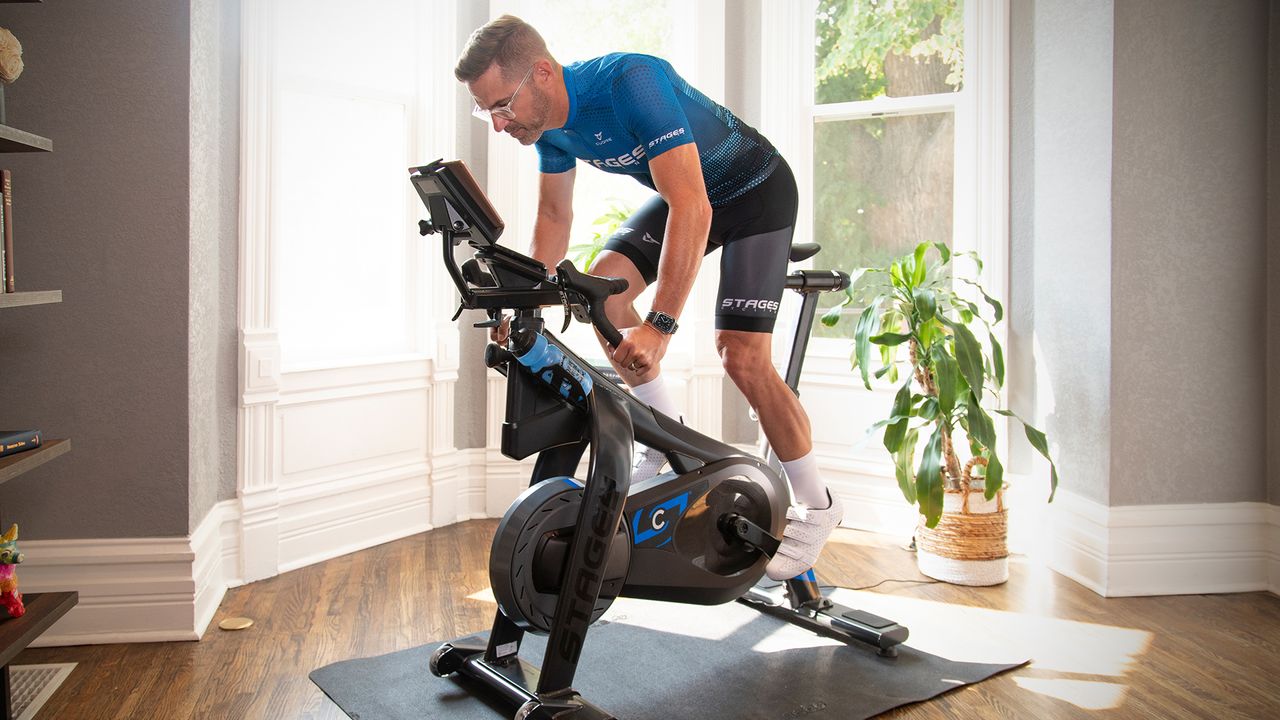
From Grand Tours to touring to bike rides with the kids, cycling is more traditionally associated with the summer. But just because it’s getting cold outside doesn’t mean you have to give up on spending time in the saddle. In fact, riding the Stages SB20 Smart Bike is the ideal way to keep yourself moving when the nights start drawing in.
The benefits of staying active during the colder months stretch way beyond keeping your performance levels up. Having easy access to workouts throughout the winter – a time when your usual group rides have probably been put on hold – can help boost your immune system while colds and flu are most prevalent. Exercise can also improve your mood, which is particularly important when the days are short, and many people suffer from the winter blues.
In other words, a bike that isn’t affected by snow, ice or wind could be brilliant news for your general wellbeing – especially when you can get pedaling with your favorite virtual content.
The Stages story
Based in Boulder, Colorado, Stages Cycling has many years of experience building indoor bikes for many of the top operators in the fitness market, including SoulCycle, Equinox, David Lloyd Leisure and Lifetime. All that expertise makes going for a ride on their SB20 Smart Bike the perfect way to keep active when the temperature outside drops. As well as improving your fitness, the SB20 brings the outdoor experience indoors. Just as importantly, it’s also fun to use.
The people at Stages aren’t just engineers or creatives or business leaders. They love getting out on their bikes as much as you do, and they’ve been applying that specialist knowledge to indoor cycling innovation for over a decade.
During Stages’ early days, they made groundbreaking developments in the field of power measurement. Power meters had previously been prohibitively expensive, so they set out to make them more accessible and easier to use – the company subsequently supplied meters to Team Sky (now Team Ineos).
Stages brought this expertise to indoor bikes – which, previously, had only been capable of measuring the distance, speed and duration of your ride – providing real-time data that made them much more valuable as a training tool. The SB20 Smart Bike was built to utilize Stages’ unique understanding of the importance of power output to cycling training, and they’ve utilized their extensive experience building indoor bikes for gyms and cycling boutiques in its design.
The Stages SB20 Smart Bike
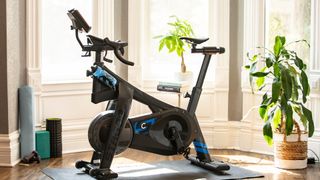
If you’ve been using non-smart or wheel-off trainers, you may be wondering about the benefits of stepping up to a smart bike. Aside from the obvious advantages of keeping you riding when the weather takes a turn for the worse, the Stages SB20 has numerous features to help you get the most out of your indoor time in the saddle.
As well as the Stages Dual-Sided Power Meter that helps you keep an eye on your output, the smart bike has a 50-pound flywheel to deliver an impressively realistic ride feel. Meanwhile, the customizable virtual drivetrain provides a wide range of electronic resistance to create one of the most immersive cycling experiences on the market. The SB20 is also super-quiet – Stages reckon your fan will make more noise than your smart bike when you’re riding.
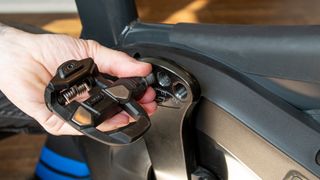
Crucially, the SB20 is built for versatility. The Stages Dream Drive, for example, gives you a choice of up to 50 gears, or – if you prefer – you can select a drivetrain to match the one you use on your outdoor bike. The bike is easily customizable to match your personal specifications, allowing for micro-adjustments to reach, stack, saddle height, handlebar configuration and crank length. And, depending on your cycling preferences, you can add remote shifters to aerobars or mountain bike bars.
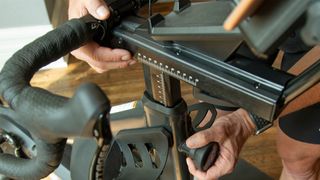
On top of all that, it’s designed to integrate with your riding platform of choice. Whether you want to record your rides using the Stages Cycling app or your favorite third party software (compatible apps include Zwift, Rouvy, TrainerRoad and Peloton), the SB20 has you covered. Better still, it’s ANT+ FE compatible, meaning you can connect your SB20 to your head unit and ride structured workouts in ERG mode.
So if you want to keep up your cycling training through the winter, you won’t find a better way to replicate the feeling of being on the road than riding the Stages SB20 Smart Bike.
From October 13-25, the Stages SB20 Smart Bike comes with a free floor mat (US only), and is available at the discounted sale price of $1,999 (MSPR $3,149). For more information, visit Stages Cycling.
Five workouts to get you moving indoors
The Stages team outline five indoor workouts to help you get the most out of your SB20 Smart Bike
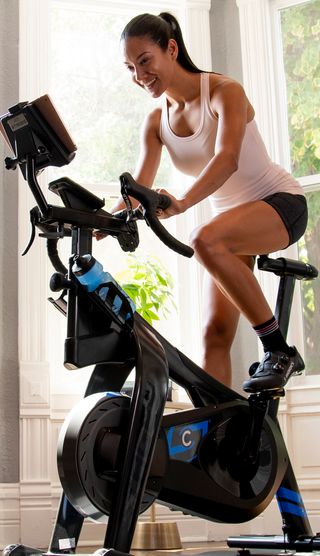
1. IMPROVING RIDING SKILLS
One of the benefits of riding indoors is that there are no potholes, cars or other outdoor hazards to worry about. This means you can devote all of your attention to your posture, positioning on the bike, pedaling skills and other aspects of your riding form. Stages recommend mixing up one-legged drills, over-gear/low cadence drills and fast cadence drills as part of regular indoor recovery rides – as well as helping the time pass faster, it should give your workout extra purpose.
2. “KITCHEN SINK”
This relatively short (75 minutes) workout is ideal if you’re looking for something hard with plenty of intensity changes.
- 10 minutes warm-up (easy spinning), recovery (zone 1) with a couple minutes of endurance (zone 2)
- 10 minutes at tempo (zone 3, 80-90 rpm)
- Five minutes of recovery (zone 1)
- 10 minutes at tempo (zone 3, 80-90 rpm) but include a ten-second ‘sprint’ (non-maximal effort) at the end of each minute
- Five minutes of recovery (Zone 1)
- 3 sets x 5 repetitions of 30 seconds ‘on’ (VO2 zone 5) and 30 seconds ‘off’ at tempo (zone 3). 5 minutes of recovery (zone 1) between each rep. (Note: the ‘off’ portion of the interval is at zone 3, not zone 1
- Take 5-10 minutes of recovery (zone 1) to finish the workout
3. MICRO INTERVALS FOLLOWED BY A SHORT SPRINT
A one-hour workout designed for late winter/spring when competitive group rides are back on the agenda. It features rapid accelerations to mimic the micro surges you’d encounter in a peloton, and goes to tempo at the end to work on your endurance.
- 10 minutes warm-up (easy spinning), recovery (zone 1) with a couple minutes of endurance (zone 2)
- 30 minutes of repeating 15 seconds at VO2 max power (zone 5) followed by 45 seconds of tempo (zone 3). (Note: the ‘off’ portion of the interval is at zone 3, not zone 1)
- 5 minutes of recovery (zone 1)
- 10 minutes of tempo (zone 3, 90-100 rpm). At the end of the 10 minutes, sprint all out, 100% for 20 seconds
- Take 5-10 minutes of recovery (zone 1) to finish the workout
4. THRESHOLD STEP-UPS
This 40-minute workout is a variation on the tried-and-true threshold interval.
- 10 minutes warm-up (easy spinning), recovery (zone 1) with a couple minutes of endurance (zone 2)
- 3 minutes of tempo (zone 3, 80-90 rpm)
- 4 minutes of low threshold (bottom of zone 4, 90-100 rpm)
- 3 minutes of high threshold (top of zone 4, 100+ rpm)
- 3 minutes of recovery (zone 1)
- Repeat three times total
- Take 5-10 minutes of recovery (Zone 1) to finish the workout
5. ONE-LEGGED DRILLS/OVER GEAR/FAST CADENCE
A 57-minute recovery ride that focuses on pedaling technique and strength.
- 10 minutes warm-up (easy spinning), recovery (zone 1) with a couple minutes of endurance (zone 2)
- 4 repetitions of pedaling with one leg (30 seconds for each leg). Unclip the unused leg and let it dangle, out of the way of your crankarm and pedal. Switch legs every 30 seconds to make each block of one-legged drills 4 minutes. Wattage is irrelevant – aim for a cadence of 80-100 rpm
- 2 minutes of recovery (zone 1)
- 4 x 30 second (each leg) one-legged drills
- 2 minutes of recovery (zone 1).
- 4 x 30 second (each leg) one-legged drills
- 2 minutes of recovery (zone 1)
- 2 minutes of over gear. Wattage should be below zone 4 and cadence should be 50-60 rpm
- 2 minutes of fast cadence. Wattage should be below Zone 4 and cadence target is 100+ rpm
- 2 minutes of over gear
- 4 minutes of recovery (zone 1)
- 3 minutes of fast cadence
- 3 minutes of over gear
- 3 minutes of fast cadence.
- Take 5-10 minutes of recovery (zone 1) to finish the workout

Thank you for reading 20 articles this month* Join now for unlimited access
Enjoy your first month for just £1 / $1 / €1
*Read 5 free articles per month without a subscription

Join now for unlimited access
Try first month for just £1 / $1 / €1
Get The Leadout Newsletter
The latest race content, interviews, features, reviews and expert buying guides, direct to your inbox!
Founded in 1891, Cycling Weekly and its team of expert journalists brings cyclists in-depth reviews, extensive coverage of both professional and domestic racing, as well as fitness advice and 'brew a cuppa and put your feet up' features. Cycling Weekly serves its audience across a range of platforms, from good old-fashioned print to online journalism, and video.
-
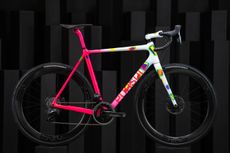 Celebrated U.S. carbon bike manufacturer Pursuit Cycles ends frame production
Celebrated U.S. carbon bike manufacturer Pursuit Cycles ends frame productionCompany shifts focus from bikes to advanced composites research
By Tyler Boucher Published
-
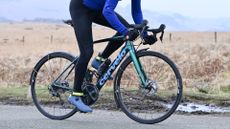 DT Swiss ER 1600 Spline 23: can an aluminium wheelset still pack a punch?
DT Swiss ER 1600 Spline 23: can an aluminium wheelset still pack a punch?The DT Swiss ER 1600 Spline 23 is an aluminium wheelset, can it still offer something against the carbon alternatives
By Tim Russon Published